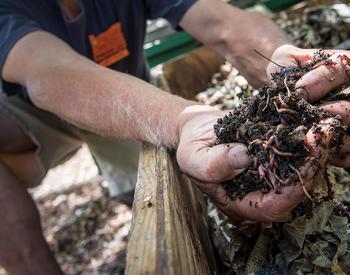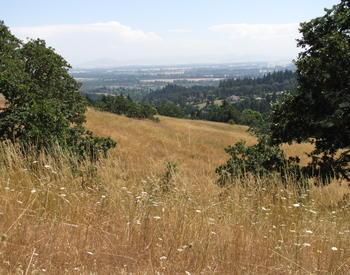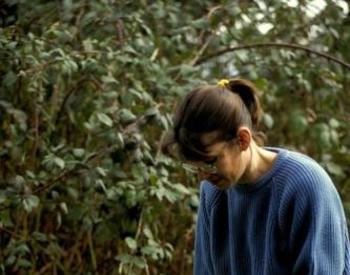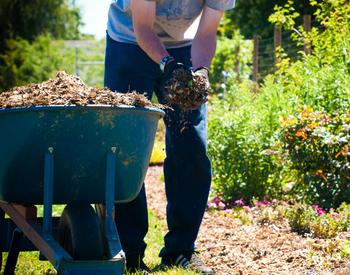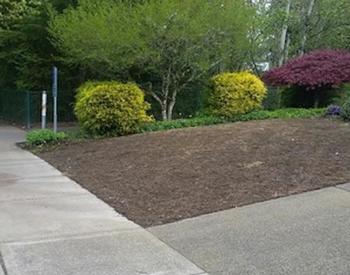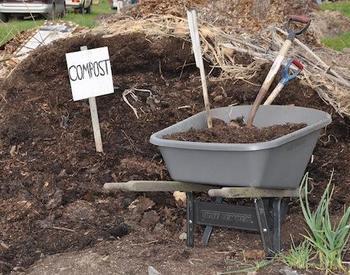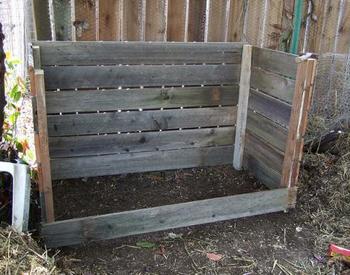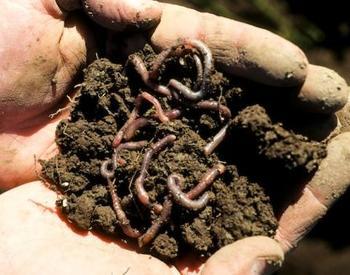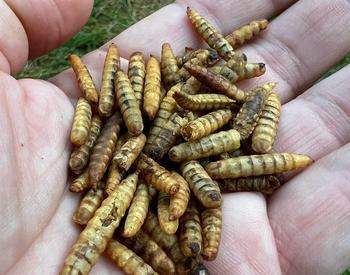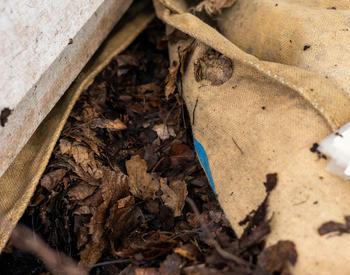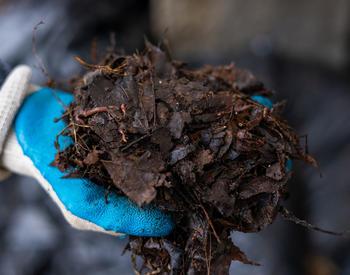What do we know about heavy metals in soil?
- Metals from air pollution accumulate in the top 1-2 inches of soil and tend to stay put.
- Old orchards have more lead and arsenic in the soil because of residue from old insecticides.
- Soil next to busy roads may have higher lead levels because of exhaust from now-banned leaded gasoline.
What do we know about lead exposure through soil and garden plants?
- Lead poses human health hazards when particles are inhaled or ingested.
- Lead does not enter the body through unbroken skin.
- In general, plants do not absorb lead into their tissues.
- Lead particles can settle on vegetables grown in lead-contaminated soil or in areas where lead-laden air pollution settles.
- You can be exposed by eating unwashed fruits and vegetables.
- Lead in soil can be a hazard for young children who play in the dirt and then put their hands in their mouths.
What do we know about cadmium and arsenic in soils?
- Cadmium and arsenic are naturally occurring elements widely distributed in the earth's crust.
- Exposure to cadmium can come through foods, cigarette smoke, water or air.
- All foods contain a low level of cadmium.
- Leafy vegetables, grains, legumes and kidney meat have the highest levels.
- You can reduce your risk by eating a balanced diet.
- For adults, most exposure to arsenic occurs through the diet and inhalation.
- For young children, hand-to-mouth activity is an important exposure route.
- Most arsenic consumed in foods is excreted unchanged in the urine.
What can I do if I’m at risk for heavy metals in my garden soil?
- Unless your soil has exceptionally high levels of lead or cadmium (which you can find out by testing—see below), it’s probably safe to eat vegetables after washing them thoroughly.
- Wash with cold running water just before eating, cutting or cooking.
- Be especially careful in washing vegetables that may trap dust, such as leafy greens, broccoli or cauliflower. Remove the outer leaves of greens. Wash everything thoroughly.
- Wash your hands after working in the garden and before you wash your produce.
- Wear gloves, long pants and closed-toe shoes in the garden.
- To reduce your exposure to heavy metals in the soil, cover bare ground to prevent blowing dust.
- Apply mulch or compost to bare areas, or plant a lawn or ground cover.
- Grow vegetables in raised beds filled with an uncontaminated growing medium. Planting mixes certified by the Organic Materials Review Institute (OMRI) or the U.S. Composting Council are free of heavy metal pollution.
- Keep tillage to a minimum.
- Plant annuals away from busy roads.
- Keep your soil pH near neutral: 6.5–7. This is a good pH range for most vegetable crops.
- Supervise children when they are in the garden, and supervise hand-washing after outdoor play.
What do my soil test results mean?
- Ask whether metals were extracted using a strong acid.
- If so, you can compare your results directly to the levels reported in the OSU Extension publication EC 1616, Reducing Lead Hazard in Gardens and Landscapes.
- Also see Reducing Lead Hazard in Gardens and Landscapes for recommended gardening practices for different thresholds of lead in the soil.
- The sample test below shows levels of arsenic, cadmium, chromium, copper, lead, nickel and zinc in a homeowner’s soil.
- See the OSU Extension publication EC 1478, Soil Test Interpretation Guide, if you submitted a soil sample for plant nutrition.
Be cautious about planting vegetables close to older structures.
- Lead-based paints have not been sold in the U.S. since 1978, but structures built before 1978 were likely painted with lead-based paint.
- Figure 1 shows the results of soil tests for lead contamination at 0, 5, 10 and 15 feet from structures.
- In all sites tested, lead concentrations right next to the structure are high enough to prohibit the production of leafy vegetables and root crops.
- In all sites tested, lead concentrations 15 feet from the structure show some lead present from human activities, but with care, any vegetable crop could be grown.
- For recommended gardening practices based on results of soil testing for lead, see Table 1 in EC 1616, Reducing Lead Hazard in Gardens and Landscapes.
Are my bees at risk from heavy metal pollution?
- Research in an industrialized area found that honey did not contain elevated lead levels, even when bees foraged in contaminated areas.
- There is no research on how heavy metals affect bee health learning and behavior.
- If lead or cadmium dust is on plants, bees could carry it back to the hive, which would increase exposure for the colony.
Where can I learn more?
- Raised Bed Gardening (FS 270), Oregon State University Extension Catalog
- A Guide to Collecting Soil Samples for Farms and Gardens (EC 628), OSU Extension Catalog
- Analytical Laboratories Serving Oregon (EM 86778), OSU Extension Catalog
- Air quality in Portland. Safer Air Oregon.
- Lead in plumbing. Multnomah County Health Department.
- For families concerned about elevated lead in school water fixtures. Multnomah County Health Department.
- For EPA thresholds for heavy metal contamination of high-contact areas for children and bare soil areas in the landscape, see the OSU Extension publication EC 1616, Reducing Lead Hazard in Gardens and Landscapes.
- Healthy soils: Information about testing your yard or garden. Oregon Health Authority.
- Resources for healthy gardening in Oregon. Oregon Health Authority.
- Understanding your test results: Metals in garden soils and vegetables. New York State Department of Health and Cornell University.
- Healthy soils, healthy communities: Metals in urban garden soils. New York State Department of Health and Cornell University.
Selected citations from academic literature
Accumulation of lead and arsenic by carrots grown on lead-arsenate contaminated orchard soils. 2015. E. E. Codling, R. L. Chaney, and C. E. Green. Journal of Plant Nutrition, 38:509–525. ISSN: 0190-4167 print / 1532-4087 online. DOI: 10.1080/01904167.2014.934477
This research determined that carrots grown in former orchard soil did accumulate lead and arsenic. The researchers were unable to determine what portion of the lead and arsenic was in a form that humans could take up when the carrots were eaten.
Field evaluations on soil plant transfer of lead from an urban garden soil. 2013. Chammi P. Attanayake, Ganga M. Hettiarachchi, Ashley Harms, DeAnn Presley, Sabine Martin, and Gary M. Pierzynski. Journal of Environmental Quality. DOI:10.2134/jeq2013.07.0273
The objectives of this study were to evaluate the transfer of lead from soil to plants, to determine the impact of amending soils with a leaf compost to reduce lead uptake by plants, and compared vegetable cleaning techniques for their ability to remove lead from the surface of vegetables.
Lead in urban soils: A real or perceived concern for urban agriculture? 2016. Sally L. Brown, Rufus L. Chaney, and Ganga M. Hettiarachchi. Journal of Environmental Quality 45:26–36. DOI: 10.2134/jeq2015.07.0376
The take-home points from this study were that urban agriculture is unlikely to increase the blood lead levels of children because crop production practices are also the best practices to limit risk associated with lead in soil.
